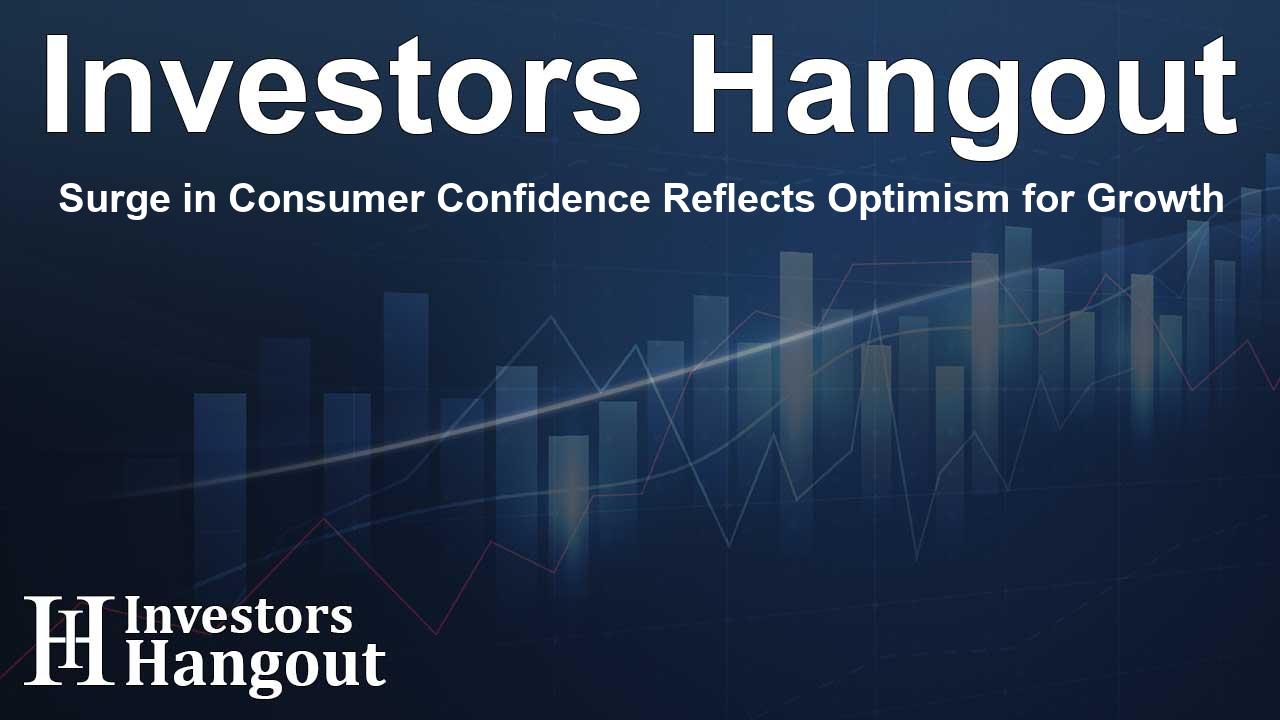Surge in Consumer Confidence Reflects Optimism for Growth

Consumer Confidence Figures Show Remarkable Growth
The Conference Board (CB) has unveiled its latest Consumer Confidence figures, revealing an encouraging reflection of consumer sentiment towards economic activity. With the actual reading coming in at 111.7, it closely trails the anticipated 111.8, showcasing a notable rise from the previous figure of just 2.1.
Understanding the Consumer Confidence Index
The Consumer Confidence index serves as a crucial indicator for predicting future consumer spending, an essential component of the overall economic landscape. An uptick in this index suggests heightened consumer optimism, thus making the recent reading a promising sign for the US economy.
Analysis of Recent Trends
Although the actual Consumer Confidence figure of 111.7 marginally missed the forecasted target, the leap from a previous low of 2.1 is telling. This impressive increase reflects a marked shift in consumer outlook, hinting at a bullish trend for the US dollar and economic growth.
Market and Economic Implications
Economists and investors closely monitor the CB Consumer Confidence data, as it conveys valuable insights into consumer expectations regarding economic conditions and spending readiness. A robust reading is often interpreted as a positive, or bullish, signal for the US dollar, while lower figures may indicate bearish trends.
Significance of Consumer Sentiment
In light of the most recent data, even though it slightly falls short of the forecast, the confidence index remains impressive. Such optimism among consumers can potentially propel increased spending, thereby stimulating economic activity further.
Role of the CB Consumer Confidence Index
The weight of the CB Consumer Confidence figure is highlighted by its high importance rating, reflecting its role in influencing economic trends. The latest reading of 111.7, nearly aligning with predictions and significantly up from its predecessor, is indeed a beacon of hope for the US economy and the strength of the dollar.
Frequently Asked Questions
What is the current Consumer Confidence Index reading?
The current reading is 111.7, which shows a significant increase from the previous figure.
How does the Consumer Confidence Index affect the economy?
It indicates consumer expectations and willingness to spend, which can boost economic activity when high.
Why is the Consumer Confidence index important?
It helps predict consumer spending trends, essential for economic forecasting and investment decisions.
What happened to the previous Consumer Confidence figure?
The previous figure was notably low at 2.1, which makes the current reading a remarkable improvement.
How do economists interpret the Consumer Confidence figures?
Higher figures are generally viewed positively, suggesting optimism, while lower figures may indicate caution among consumers.
About Investors Hangout
Investors Hangout is a leading online stock forum for financial discussion and learning, offering a wide range of free tools and resources. It draws in traders of all levels, who exchange market knowledge, investigate trading tactics, and keep an eye on industry developments in real time. Featuring financial articles, stock message boards, quotes, charts, company profiles, and live news updates. Through cooperative learning and a wealth of informational resources, it helps users from novices creating their first portfolios to experts honing their techniques. Join Investors Hangout today: https://investorshangout.com/
Disclaimer: The content of this article is solely for general informational purposes only; it does not represent legal, financial, or investment advice. Investors Hangout does not offer financial advice; the author is not a licensed financial advisor. Consult a qualified advisor before making any financial or investment decisions based on this article. The author's interpretation of publicly available data shapes the opinions presented here; as a result, they should not be taken as advice to purchase, sell, or hold any securities mentioned or any other investments. The author does not guarantee the accuracy, completeness, or timeliness of any material, providing it "as is." Information and market conditions may change; past performance is not indicative of future outcomes. If any of the material offered here is inaccurate, please contact us for corrections.